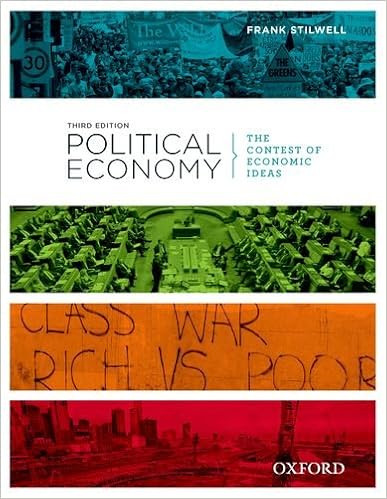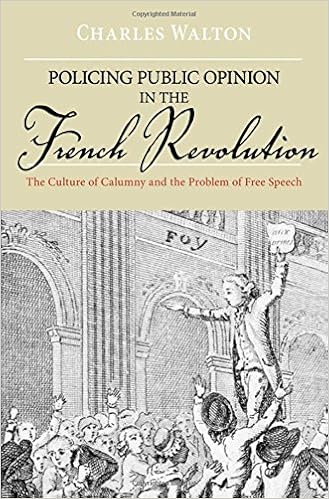Within the Seventies, the us confronted demanding situations on a couple of fronts. by means of approximately each degree, American strength was once now not unrivalled. the duty of coping with America's relative decline fell to President Richard Nixon, Henry Kissinger, and Gerald Ford. From 1969 to 1977, Nixon, Kissinger, and Ford reoriented U.S. overseas coverage from its conventional poles of liberal interventionism and conservative isolationism right into a coverage of lively yet conservative engagement. In Nixon on the planet, seventeen top historians of the chilly struggle and U.S. international coverage convey how they did it, the place they succeeded, and the place they took their new technique too some distance. Drawing on newly declassified fabrics, they supply authoritative and compelling analyses of matters corresponding to Vietnam, détente, hands keep watch over, and the U.S.-China rapprochement, growing the 1st finished quantity on American international coverage during this pivotal period.
Quick preview of Nixon in the World: American Foreign Relations, 1969-1977 PDF
Similar Politics books
Slouching Towards Gomorrah: Modern Liberalism and American Decline
During this manhattan occasions bestselling booklet, Robert H. Bork, our country's such a lot amazing conservative pupil, deals a prophetic and remarkable view of a tradition in decline, a state in such critical ethical difficulty that its very origin is crumbling: a country that slouches no longer in the direction of the Bethlehem anticipated via the poet Yeats in 1919, yet in the direction of Gomorrah.
John Kennedy: A Political Profile
The approved biography of John F. Kennedy deals a clean and candid examine what formed the guy the United States got here to like and appreciate, simply as he was once at the cusp of the presidency
Historian, political scientist, and Pulitzer Prize–winning writer James MacGregor Burns wrote Roosevelt: The Lion and the Fox, the 1st quantity of his hugely acclaimed biography of FDR, in 1956. years later, Burns ran for a seat in Congress and have become shut buddies with John F. Kennedy, who used to be additionally campaigning in the course of the nation for reelection to the Senate. After Burns misplaced his election, he determined to write down a biography of JFK. with none regulations, Kennedy granted his good friend whole entry to documents, family members files, and private correspondence. the 2 males spoke at nice size in Washington, DC, and on the Kennedy relations compound on Cape Cod, and afterwards, Kennedy requested his kin, buddies, and political colleagues to speak brazenly with Burns besides. the result's a frank, incisive, and compelling portrait of Kennedy from his early life to his carrier in global battle II and his time in Congress.
While many political biographies—especially these of presidential candidates—intend to depict a definite personality, Burns wouldn't enable whatever except his personal belief to steer him. And so, John Kennedy concludes wondering no matter if JFK might make “a dedication not just of brain, yet of heart” to the nice demanding situations that lay forward. (Burns may later admit that his topic did carry either bravery and knowledge to his presidency. ) First released simply as Kennedy used to be getting into the nationwide highlight, this biography supplies an easy and interesting portrayal of 1 of the 20 th century’s most crucial figures.
Political Economy: The Contest of Economic Ideas
Now in its 3rd variation, Political financial system: the competition of monetary principles is a completely up to date survey of the political financial system and its reference to social matters. relocating past traditional remedies, this specific textual content deals a "big-picture" assessment of the analytical instruments and price judgments linked to competing colleges of monetary concept.
Within the 1789 statement of the Rights of guy and of the Citizen, French revolutionaries proclaimed the liberty of speech, faith, and opinion. Censorship used to be abolished, and France looked to be on a direction in the direction of tolerance, pluralism, and civil liberties. a trifling 4 years later, the rustic descended right into a interval of political terror, as hundreds of thousands have been arrested, attempted, and carried out for crimes of expression and opinion.
- The Oxford Handbook of the Political Economy of International Trade
- India Working: Essays on Society and Economy (Contemporary South Asia)
- Money Well Spent?: The Truth Behind the Trillion-Dollar Stimulus, the Biggest Economic Recovery Plan in History
- The Great Debate: Edmund Burke, Thomas Paine, and the Birth of Right and Left
- The Big Disconnect: Why the Internet Hasn’t Transformed Politics (Yet)
- Parties and Party Systems: A Framework for Analysis
Extra resources for Nixon in the World: American Foreign Relations, 1969-1977
As within the widening of the conflict into Cambodia, Kissinger sought to scare his adversaries through threatening an incredible, might be irreversible, escalation of the conflict. 22 at the morning of October 6, 1969, Kissinger brought on making plans for American nuclear maneuvers whilst he requested Secretary of safeguard Melvin Laird to extend the nation’s arrangements for battle in order that “the different part” will “pick this up. ” Later that night Nixon ordered Laird to “initiate a chain of elevated alert measures designed to exhibit to the Soviets an expanding HENRY KISSINGER AND AMERICAN GRAND process seventy seven readiness by means of U. S. strategic forces. ” Nixon’s fees have been obscure. Kissinger needed to rework those cryptic reviews right into a specific set of activities. The president desired to look difficult, yet his nationwide defense Council consultant needed to figure out easy methods to do that successfully with nuclear guns. Kissinger and his assistant, normal Alexander Haig, pressed the army paperwork to collect an offer that may: 1. 2. three. four. five. 6. be discernible to the Soviets and be either strange and significant; now not be threatening to the Soviets; now not require titanic extra investment or assets; no longer require contract with the allies; no longer degrade crucial missions; have minimal likelihood of public publicity. 23 Senior army planners resisted this scheme since it violated typical assumptions approximately nuclear deterrence and it diverted American assets from different deliberate routines and actions. It additionally seemed not likely to frighten U. S. adversaries. Lieutenant normal Robert Pursley, Secretary of protection Laird’s army aide, defined that with out a genuine mobilization for nuclear battle, this remoted act might appear like a bluff—a “sham. ” Pursley tried to persuade Kissinger and Haig that they need to find alternative ways of assembly the president’s call for for symbolic acts of longevity. 24 those objections gave Kissinger a compelling cause to name off the meant nuclear maneuvers, yet he driven ahead. greater than the president, the NSC consultant believed that nuclear guns may perhaps compel favorable habit round Vietnam. specifically, he expected powerful sign of mounting frustration and capability belligerence within the White condo may persuade the Kremlin to assist finish the conflict on applicable American phrases. it's going to additionally set a precedent for positive nuclear international relations sooner or later, instead of passive nuclear deterrence. Kissinger’s considering drew on rules he articulated as early because the mid-1950s, and persevered to suggest via 3 diversified presidential administrations. In 1969 he had the chance, for the first time, to place those principles into motion. On October nine, Kissinger prompt that Nixon approve a sequence of specific nuclear maneuvers, together with: 1. Communications silence in chosen Strategic Air Command and Polaris nuclear submarine instructions; 2. Cessation of standard wrestle airplane workouts in choose components; three. elevated surveillance of Soviet ships en path to North Vietnam; 78 PARAMETERS four.





